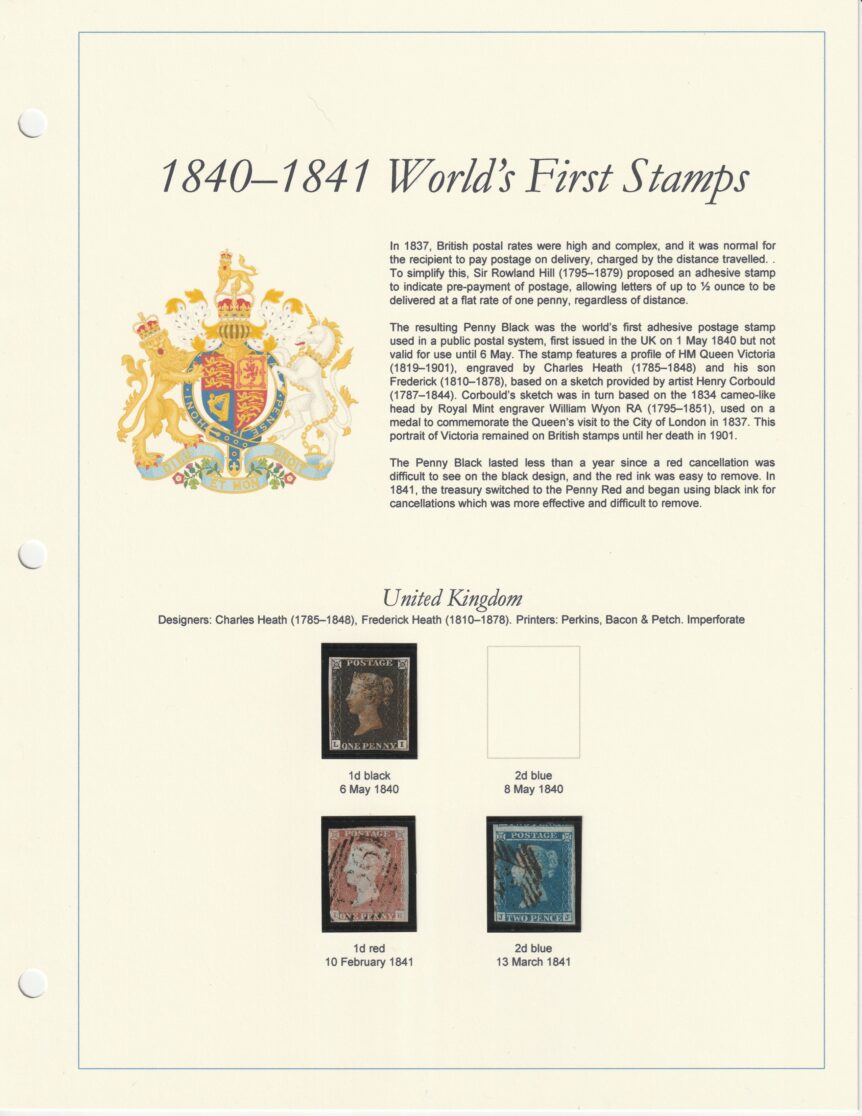
In 1837, British postal rates were high and complex, and it was normal for the recipient to pay postage on delivery, charged by the distance travelled. To simplify this, Sir Rowland Hill (1795–1879) proposed an adhesive stamp to indicate pre-payment of postage, allowing letters of up to ½ ounce to be delivered at a flat rate of one penny, regardless of distance.
The resulting Penny Black was the world’s first adhesive postage stamp used in a public postal system, first issued in the UK on 1 May 1840 but not valid for use until 6 May. The stamp features a profile of HM Queen Victoria (1819–1901), engraved by Charles Heath (1785–1848) and his son Frederick (1810–1878), based on a sketch provided by artist Henry Corbould (1787–1844). Corbould’s sketch was in turn based on the 1834 cameo-like head by Royal Mint engraver William Wyon RA (1795–1851), used on a medal to commemorate the Queen’s visit to the City of London in 1837. This portrait of Victoria remained on British stamps until her death in 1901.
The Penny Black lasted less than a year since a red cancellation was difficult to see on the black design, and the red ink was easy to remove. In 1841, the treasury switched to the Penny Red and began using black ink for cancellations which was more effective and difficult to remove.

